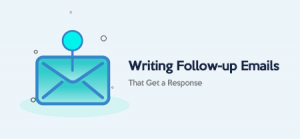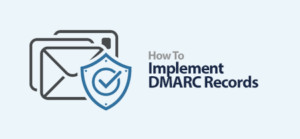If there's one marketing platform that has stood the test of time, it has to be the humble email. Despite being around for over 50 years, emails are still businesses' most preferred communication and marketing channels.
Emails, on average, result in an ROI of $36 for every $1 spent — which is the highest of all marketing channels. Such 30x returns have piqued the interest of marketers who have consistently increased their email marketing budgets year after year.
But the truth is, such ROIs can only be experienced when you have an exceptional strategy. And considering the high competition among eCommerce businesses relying on emails, it's getting harder for most of them to rise above the rest. So what can help you stand apart? Enter email retargeting.
This article will address how an eCommerce business like yours can leverage email retargeting and will provide the best practices to witness a sales boom.
What is Email Retargeting?
Not all purchases are spontaneous. When your customers visit your online store, it's highly unlikely that each of them might instantly convert. Multiple barriers may restrict them from making a purchase, such as unreadiness to commit to a product, unsure about their needs, taking more than a day to decide, etc.
Here's when retargeting plays a significant role in nudging your customers toward completing a purchase.
Email retargeting is the technique businesses use to remind customers who have demonstrated interest in their digital properties by sending personalized emails and increasing their odds of closing a sale.
One of the most popular forms of an email retargeting campaign is the abandoned cart email. Such emails attract higher open rates and help convert customers faster as they serve as friendly reminders for customers and help quicken their decision-making.
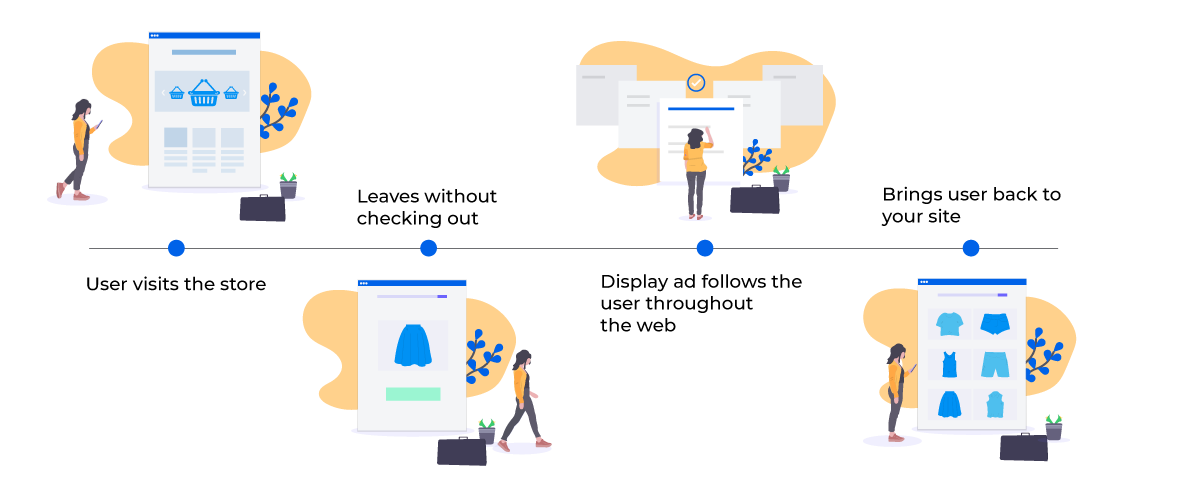
A classic case of ad retargeting - Source
Why is Email Retargeting Important?
Being around your customers and personalizing their experiences are key to boosting conversions. And an email retargeting campaign is the perfect recipe to get your customers back to your site and re-engage them.
Moreover, since email retargeting is focused on your customers' interactions and guided by consumer data, the ultimate marketing strategy stands out on the customer experience front.
So when such targeted messaging is contextual to customer interests and is crafted to depict their journey with your brand, you invite higher click-through and open rates and, eventually, more conversions. It's of no surprise that remarketing emails are six times more likely to convert than standard ones.
Here are more ways email retargeting helps eCommerce businesses:
- Helps build better relationships with your returning customers and improves retention rates.
- Serves as a non-pushy way to follow up and remind your customers to complete their purchases.
- Attracts more visitors and provides opportunities to upsell items.
How Does Email Retargeting Work?
Email retargeting works by understanding your customers’ behavioral patterns and tailoring the messaging to stay relevant to your customers’ activities.
Analyzing patterns is often done with the help of browser cookies, tracking down user activities on several mediums, and using third-party applications and tools. Email retargeting is based on how customers interact with your brand.
The non-intrusive nature of email retargeting makes it a good conversion approach — for both brands and customers. Unlike promotional emails, which are most likely to be marked as spam, retargeting emails do not annoy your customers and are customized to meet their interests and encourage more clicks.
Here are five reasons why email retargeting works:
- Helps you offer your customers something of value. You can perfectly balance crafting customer-specific offers and closing an incomplete sale.
- Reminds customers about your business and re-engages them without being aggressive.
- Drives brand awareness, brand recall, and loyalty.
- Helps you gain a deeper insight into understanding your customers’ behavioral patterns, which can supplement other marketing campaigns.
- You can actively re-engage inactive subscribers and offer them an encouraging CTA.
Examples of Email Retargeting
How are eCommerce businesses using email retargeting as part of their impactful email marketing efforts? Below are four excellent examples to get inspired from:
Renewal reminder email
A service renewal email is typically sent to existing customers. It could be customers who’ve availed of a free trial on your products or services, and you want them to upgrade to a paid plan or may have their renewal date fast approaching.
Most customers would lose track or shrug off renewing services. In such instances, a renewal reminder email is a great way to retarget your customers and remind them of your presence by letting them know how you could help and highlight your products.
Also, adding an exclusive offer as part of the email and giving your customers a convincing reason to renew to let them know what they’re missing out on can further create more impact.
In this example from Apple, two things that stand out and are hard to ignore are its subject line which creates a sense of urgency, and the email body containing a list of popular movies (its products) that would stir the target audience to proceed with the upgrade.

One significant benefit of eCommerce is its convenience of purchasing products and services. And well-curated reminder emails can ensure your customers are always kept in the loop — regarding product upgrades, new launches, etc., every successful effort provides a consistent flow of profits.
Cart abandonment email
Cart abandonment is quite common for eCommerce businesses. It could be due to a customer being unready to purchase the item or is still in the browsing stage of online shopping and looking for cheaper alternatives — among other reasons.
Abandoned cart email campaigns are excellent customer conversion mediums and email re-targeters as they bring your products from your customers’ browsing page to their inboxes. All this without appearing too salesy.
In this example, the eCommerce store does a good job by adding a catchy phrase in its cart abandonment email and a CTA that lets the customer complete their purchase.
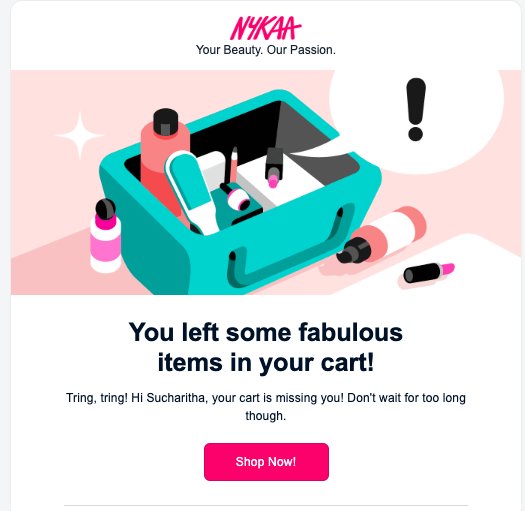
Replenishment email
Replenishment emails are sent out to your existing customers as a reminder for these three most common reasons: to reorder items that are about to go out of stock, when their previously purchased items are about to expire, or when an item they are looking for is back in stock.
Whatever the reason, replenishment emails are a great way to prompt your customers to return to your site and purchase their eyed products.
Tracking website cookies and pixels are the two most common ways to target specific customers looking at your site's products. Here are two examples of eCommerce brands providing inventory updates to their customers or site visitors:
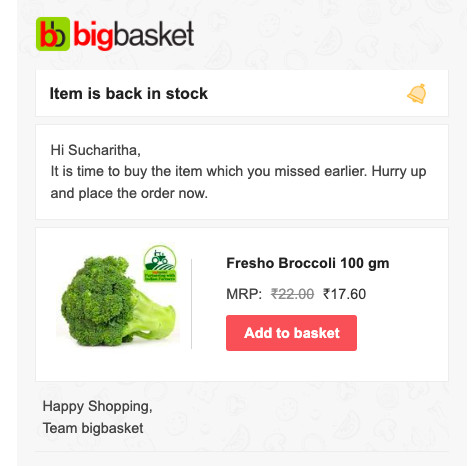

Re-engagement email
Losing subscriber count each year is inevitable for eCommerce businesses. But this in no way means you do not take any action to try and sustain inactive subscribers.
As the name suggests, re-engagement emails help re-engage and retarget inactive customers through personalized, eye-catching emails. Such emails are most effective when thoroughly analyzing customer behaviors and purchase cycles. While crafting re-engagement emails, highlight your USP and a short copy about why your customers must continue doing business with you.
The below example of a popular furniture store uses the amazing pairing of the festive season to compile an engaging email and remind its inactive user about the expiring credits. Also, don’t miss the urgency-inducing headline and a straightforward CTA.
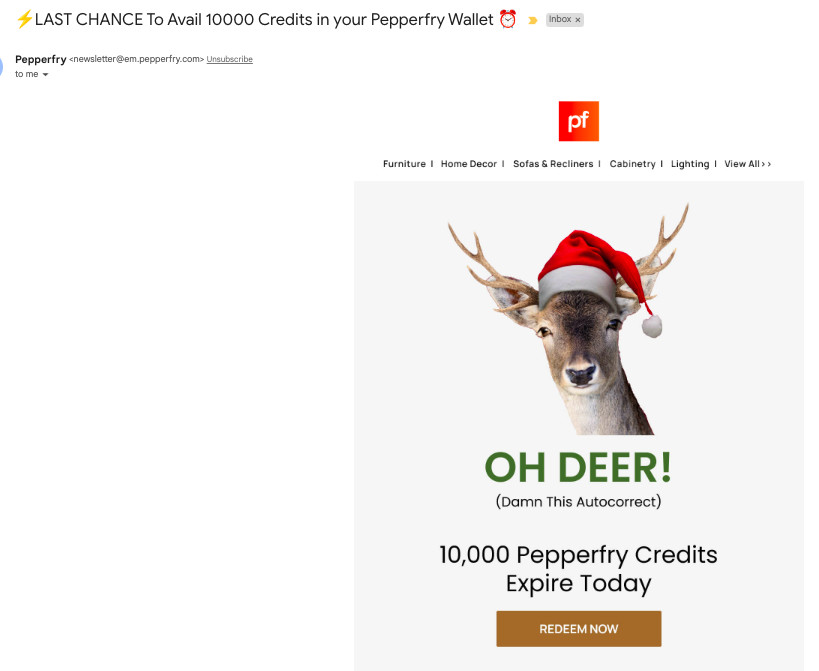
Six Email Targeting Best Practices to Follow
To ensure you obtain the best ROI from your email retargeting efforts, below are six best practices that will guide you along the way.
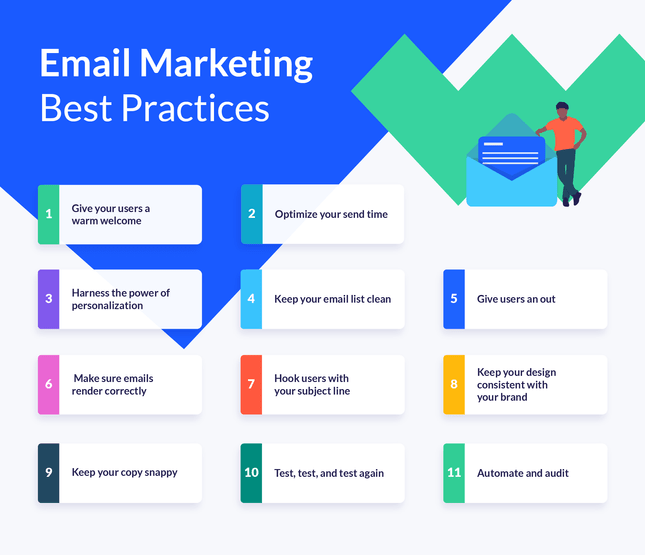
Source
Segment your email list
Your emailing list could currently be a mixture of varying audience types. For instance, you could have customers who have already purchased a product or high-quality leads who have yet to perform business with you. Also, it would be best to address multiple variables such as buyer needs, browsing patterns, user pain points, locations, and many more to segment your lists.
So, considering the numerous audience types, it’s customary to craft your messaging for each demographic so that customers resonate and take appropriate action.
Some initial things to keep in mind before you start segmenting your email list are considering the products customers view. Check their price range and stand-out features. Next, further segment your audience based on their preferences, income groups, and shopping or browsing habits.
Doing this ensures your offers are customized for each demographic and buyer personas and showcase products or services that coincide with their pain points.
How can you locate your target audience’s demographics? The Google Analytics dashboard, social media accounts, etc., can help you fetch your audience’s demographic as they break them down into your desired segments and help set things in motion.
Remember that you need to use an email marketing tool with adequate segmentation, personalization, and automation features. This will eliminate the confusion typically involved with creating customer segments and keeping them engaged.
Timing matters
Strike while the iron is hot. Sending retargeting emails while your potential buyers are in their consideration stage increases the chance of a conversion manifold.
Imagine this. You browse through a site looking for a pair of headphones as you’re traveling, and as soon as you reach your destination, you forget to place the order and get busy with your day. Wouldn’t it be great if you received a reminder to reconsider the product and some convincing reasons to buy it immediately? Your customers would feel the same.
So, right after a customer quits your site completely, post a browsing session, make sure you land in their inbox, and give them a great reason to reconsider your products and be satisfied to place an order. The sooner you send the retargeted email, the closer you are to closing the sale.
Re-engage inactive subscribers
Re-engagement helps retain customers, and remember that acquiring new customers is way more costlier than retaining old ones. Email retargeting helps you re-engage dormant users and remind them why they were subscribed to your business to begin with.
Use compelling copy to show them what they could miss out on and give them an unavoidable reason to reconsider the CTA. Provide a tailored offer to re-energize your otherwise dead subscribers.
Surveys are another popular re-engagement method to help you understand your audience preferences. So, make a note to include engaging surveys in your email campaigns. Finally, measure your email retargeting re-engagement campaigns to optimize further and gain more active subscribers. Measure open and click-through rates to understand the messaging that attracts the most attention.
Leverage automation
Each retargeting email you send should have a definite purpose. A customer would’ve browsed through your products, while the other may have abandoned a cart. Whatever the purpose, sending timely emails is crucial to retargeting users and increasing sales. That’s when automation comes to the rescue.
Email automation lets you set up email sequences to be sent out automatically when a “trigger” takes place. Such triggers arise when a subscriber takes a specific action or by a particular date or time. So, your trigger points could be behavioral or time-sensitive.
By setting trigger points based on your customer interactions, automation sends out emails as soon as the event occurs. For instance, leaving behind items in a cart without checking out is a trigger that lets automation take over and send an email reminding the user to finish where they left off.
Without automation, sending timely emails to retarget your users can be nearly impossible. Automation and email marketing work hand in hand and make your email retargeting efforts highly effective.
Keep email design consistent
Every brand must have its unique tone and voice. Such one-of-a-kind personas let brands stand apart from the overcrowded eCommerce marketplace and stay on top of customers’ minds. Known as brand recall, your customers must be aware of your brand with little to no persuasion.
How can you achieve this? The answer is consistency. And this applies to email retargeting as well. Keep your email design consistent irrespective of the type of email. Whether you design a welcome email, a new offer email, or a re-engagement email, your design must be consistent throughout and capture your brand’s voice and tone. You can start by designing a style guide that includes your brand’s logos, colors, fonts, etc. Next, create templates for each email campaign that must follow the style guide and replicate the brand’s unique tone.
By staying true to your design patterns and using consistent branding, you welcome more email clicks since your customers will know it’s you as soon as you land in their inbox.
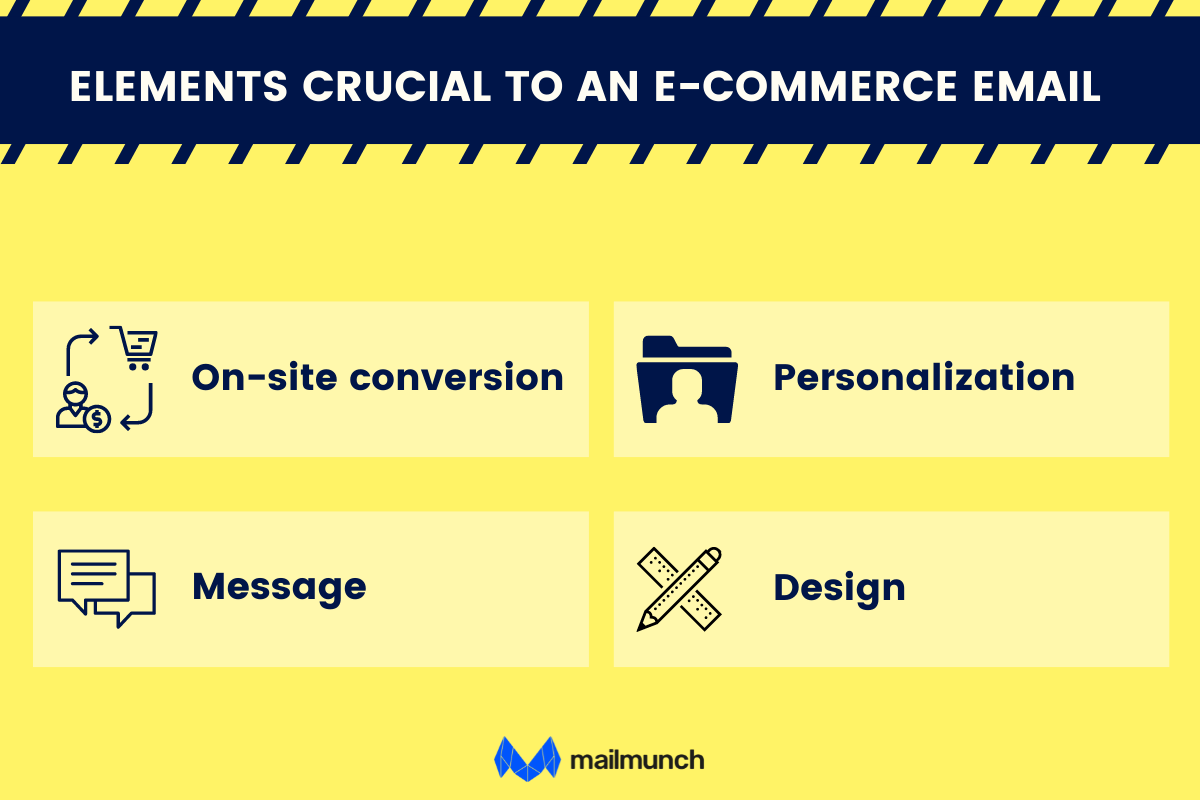
Source
Make your email interactive
Latching onto your customers’ short attention spans is indeed a challenging task. Customers and leads tend to brush off emails that are plain and one-sided. And adding just discounts does not do the trick anymore.
You can add elements to your emails that engage your audience when they click to open the email. Here are some interactive elements that you can include in your email copy for successful retargeting:
- A countdown timer for an offer that’s about to expire or a fast-approaching sale.
- An animated GIF can be a better alternative to static images. Your embedded GIFs could be your best-selling product, festive offers, a one-time discount, etc.
- A live cart with a “Go to bag” CTA to allow instant item checkouts.
- Gamifying your customers’ experiences is a great way to retarget customers. Include fun and interesting games such as ‘Spin to Win’ or product quizzes.
- Short and crisp videos to engage your customers longer and deliver more information about your products and offers.
Make your emails click-worthy by smartly using email copy. You can do this using the right interactive components and catchy messaging — without making the length long and cumbersome.
Final Thoughts
Email retargeting is a marketing strategy backed by solid customer data and does not run on plain assumptions. It is crafted from customer behavior and browsing patterns, interactions with your brand, and several other key parameters that sweep customers back into your site — resulting in increased revenue.
Moreover, email targeting is about paying attention to your audience and curating emails that resonate with them. And they discussed best practices that allow your email retargeting campaigns to actually work and show results.



